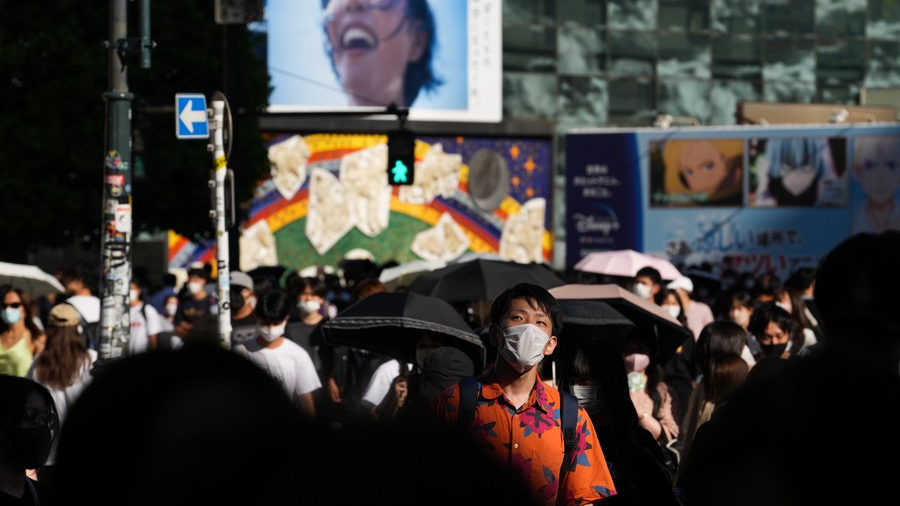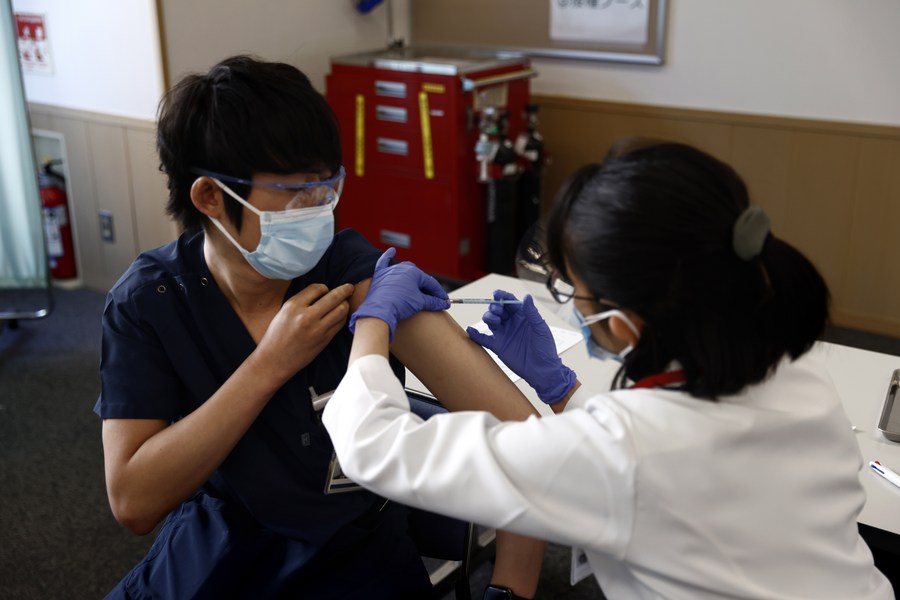
People wearing face masks walk on a street in Tokyo, Japan, July 29, 2022. /Xinhua
People wearing face masks walk on a street in Tokyo, Japan, July 29, 2022. /Xinhua
Editor's note: Freddie Reidy is a freelance writer based in London. He studied history and history of art at the University of Kent, Canterbury, specializing in Russian history and international politics. The article reflects the author's opinions, and not necessarily the views of CGTN.
At the onset of the global COVID-19 pandemic, Japan's handling of COVID-19 was widely praised as the nation efficiently adapted to the challenges of dealing with a pandemic. For Asian nations, the SARS outbreak at the start of this century led to important pandemic prevention legislation. Japan had designated isolation hospitals, Personal Protective Equipment (PPE) and ingrained behavioral traits such as mask adoption which helped to prevent the risk of transmission.
These early successes however, appear a distant memory to many. The country has endured wave upon wave of lockdowns as pockets of infection continue to spring up. The current wave is believed to be the seventh.
As well as a social strain, these preventative measures place a heavy burden on the economy. As such, last week the Japanese government announced an opening of the nation's borders to tourism for the first time since the start of the pandemic.
However, despite this encouraging news, COVID-19 cases are hitting record highs. On August 26 alone, 260,000 cases were recorded, 19 of Japan's 47 prefectures recorded all-time highs.
Health Minister Katsunobu Kato, stated that "We'll act with a sense of speed while listening to what experts and others involved have to say."
The reality for Japan though, is that it is an almost unique victim of geography and demography. The country's mountainous topography forces a concentration of the population into densely populated urban areas, ideal for the transmission of infection. Furthermore, Japan has one of the world's oldest populations, who are at a greater risk of overwhelming hospitals in the event of widespread infection.
According to University of Oxford, 82 percent of the Japanese population is fully vaccinated but the risk to the more vulnerable population is perhaps behind Tokyo's rationale of not pursuing something closer to a "herd immunity" policy, as seen across much of Europe.
There is good reason for this too. Currently the weekly COVID-19-related number of deaths in Japan is second only to the United States at 1,624 and for the past five weeks a quarter of global cases (1.47 million) are in Japan.
Continued isolation though has meant that despite the strong levels of vaccination, natural immunity remains low, as Professor of infectious diseases, Kentaro Iwata of Kobe University explained to ABC News "We protected ourselves from the infections up until recently, which means we lacked the immunity given by the natural infection. Therefore, we are very susceptible to many infections."

A medical worker receives a dose of the COVID-19 vaccine as the country launches its inoculation campaign at the Tokyo Medical Center in Tokyo, Japan, Febuary 17, 2021. /Xinhua
A medical worker receives a dose of the COVID-19 vaccine as the country launches its inoculation campaign at the Tokyo Medical Center in Tokyo, Japan, Febuary 17, 2021. /Xinhua
Professor Iwata also criticized the distribution of critical antiviral medicine such as Paxlovid, "Japan's government failed to distribute this medicine very well." Indicative of this misstep is that the Republic of Korea (ROK) has enough medicine for 300,000 people vs. Japan's 60,000 despite ROK having roughly half the population of its neighbor.
As is this experience of all nations, there is no single magic wand to the pandemic. Japan though must compartmentalize its issues. Despite a healthy percentage of the population being fully vaccinated, Japan still lags behind its regional counterparts China, Singapore and Vietnam.
It is in fact Japan's youth where vaccine adoption is weakest, which is of particular consequence as this group are the most physically mobile. In fact, COVID-19 spikes relating to the summer Bon festival are believed to be behind a recent surge. Education among this group is key, therefore.
The country's oldest citizens must also have access to the requisite medicines to prevent severe cases and hospitals becoming overwhelmed. An enhanced booster program will assist this, but a similar economic boost will also become necessary to afford such programs.
Only a combination of these factors will allow the necessary opening of society which will aid natural immunity, boost productivity and bear witness to a revival in tourism to the country. Something which has not recently been possible.
Hitherto, tourists have shunned chaperoned trips and will likely only return once the Japanese government has the confidence to ease the cap on unaccompanied visitors and such a decision will likely become a bellwether to the state of Japan's COVID-19 recovery in the months to come.
(If you want to contribute and have specific expertise, please contact us at opinions@cgtn.com. Follow @thouse_opinions on Twitter to discover the latest commentaries in the CGTN Opinion Section.)

